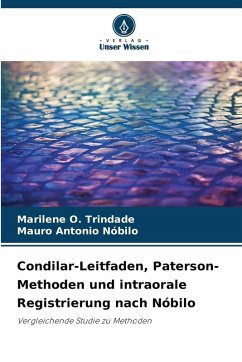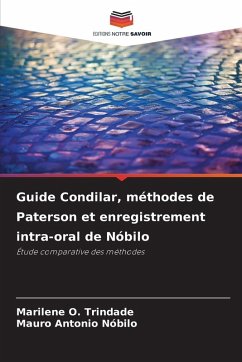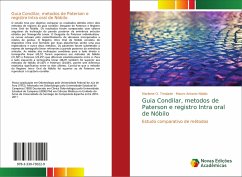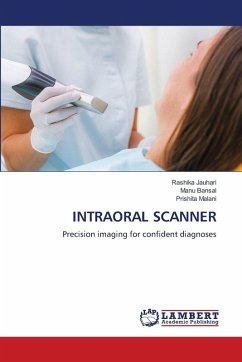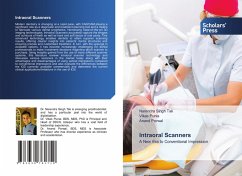
Condilar guide, Paterson methods and Nóbilo intraoral recording
Comparative study of methods
Versandkostenfrei!
Versandfertig in 6-10 Tagen
27,99 €
inkl. MwSt.

PAYBACK Punkte
14 °P sammeln!
The study aimed to compare the results obtained between two methods of condylar guide registration: Paterson Wear and Nóbilo Intraoral Registration. The results were compared with angular values of the posterior wall inclination of the articular eminence obtained by Linear Tomography. Paterson Wear individualised the occlusal curves by grinding abrasives incorporated into godiva rollers. Nóbilo's Intraoral Registration consisted of an intraoral device formed by two platforms, one being a recording spike and the other a metal disc. Patients underwent linear tomography examinations of the post...
The study aimed to compare the results obtained between two methods of condylar guide registration: Paterson Wear and Nóbilo Intraoral Registration. The results were compared with angular values of the posterior wall inclination of the articular eminence obtained by Linear Tomography. Paterson Wear individualised the occlusal curves by grinding abrasives incorporated into godiva rollers. Nóbilo's Intraoral Registration consisted of an intraoral device formed by two platforms, one being a recording spike and the other a metal disc. Patients underwent linear tomography examinations of the posterior wall of the articular eminence. The mean condylar inclinations for the right side and linear tomography (45.5°) were higher than the Nóbilo (31.58°) and Paterson (23.25°) methods, which differed statistically from each other. For the left side, linear tomography (48.0°) was also higher than the Nóbilo (31.83°) and Paterson (24.66°) methods, but without a statistically significant difference between the latter two. It was concluded that the Nóbilo Intraoral Registration method was superior to the Paterson method in reproducing the condylar trajectory.



